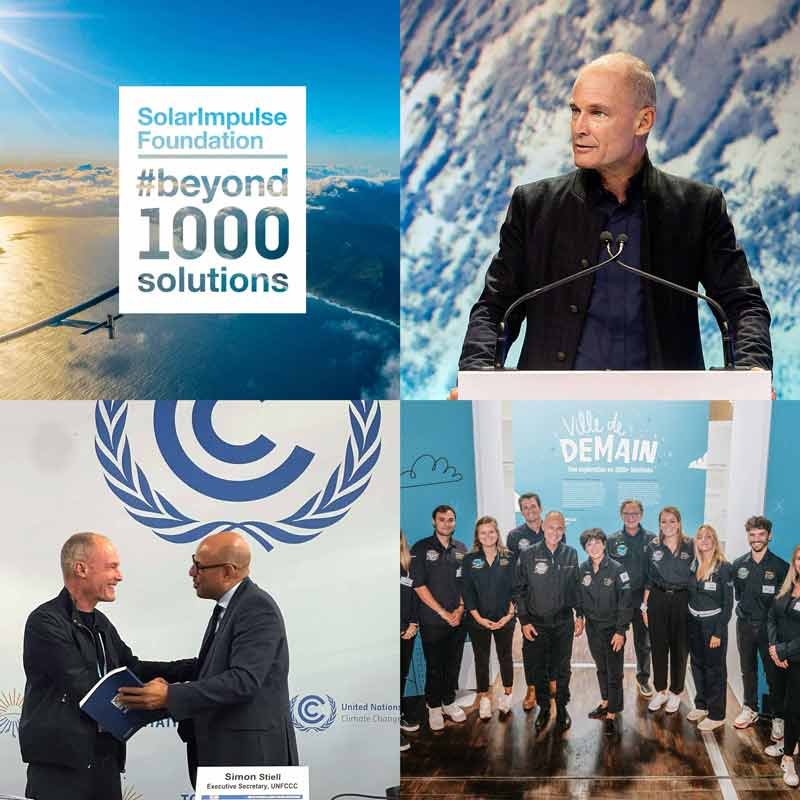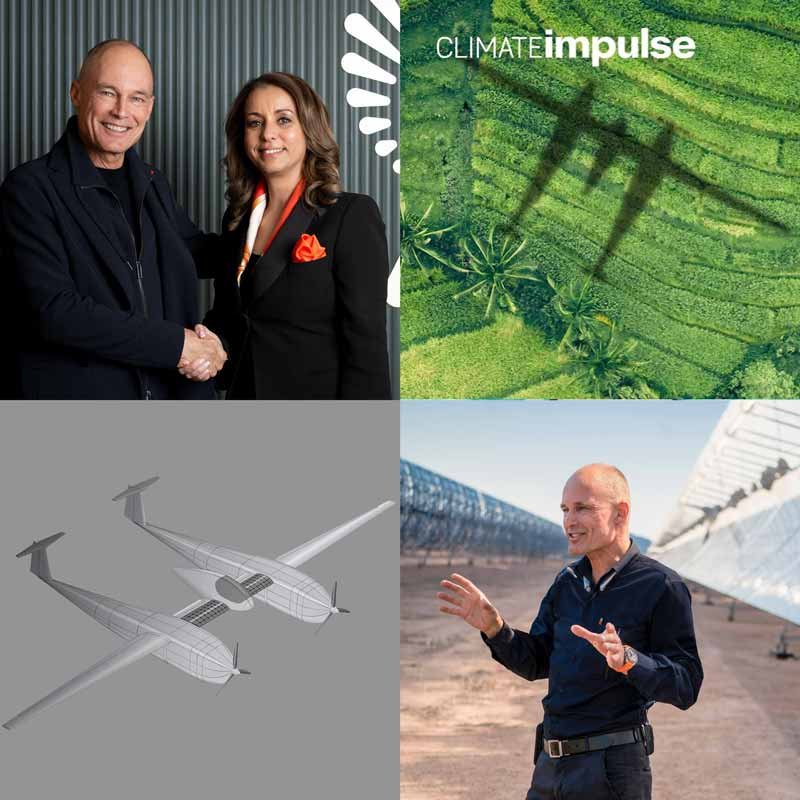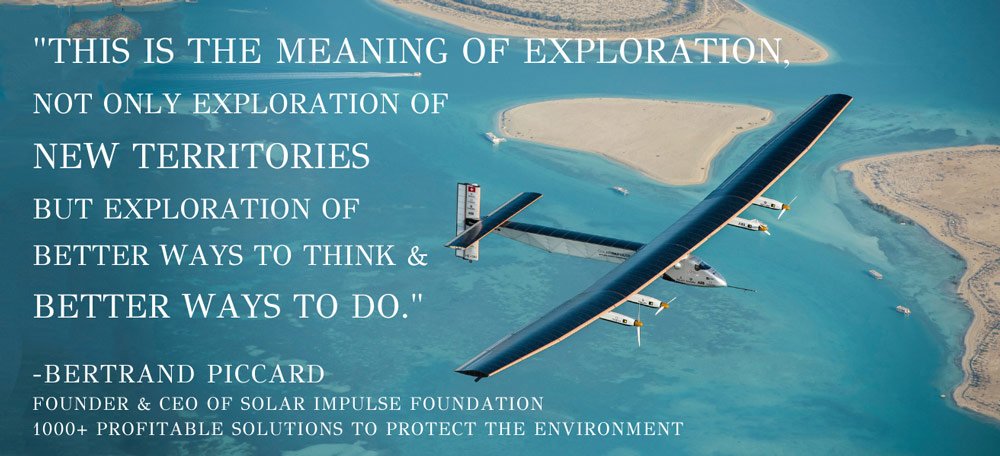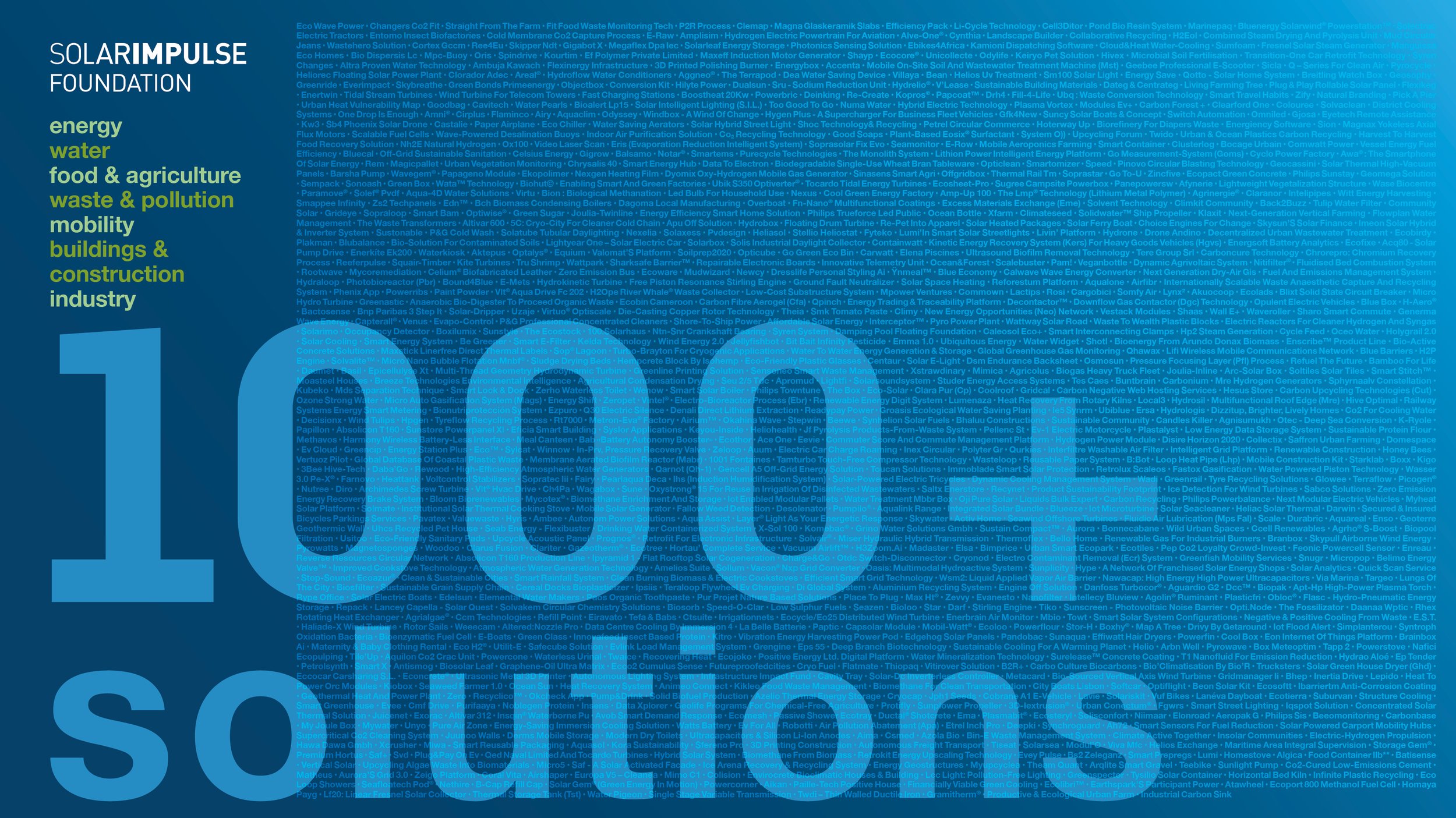What is the future of green aviation? How do we share environmental solutions to unite people and change the climate narrative from sacrifice and fear to enthusiasm and hope?
Bertrand Piccard is a notable Swiss environmentalist, explorer, author, and psychiatrist. His ventures include being the first to travel around the world in a non-stop balloon flight and years later in a solar-powered airplane. He is regarded as a pioneer in clean technology. Piccard is also the founder of the Solar Impulse Foundation, which has identified over 1500 actionable and profitable climate solutions and connects them with investors. As a UN Ambassador for the Environment, his goal is to convince leaders of the viability of a zero-carbon economy, which he will demonstrate via his next emission-free project Climate Impulse, a green hydrogen-powered airplane that can fly nonstop around the earth.
THE CREATIVE PROCESS · ONE PLANET PODCAST
So, in 2028, you'll be flying nonstop around the world in a green hydrogen-powered airplane, Climate Impulse. You've achieved the first circumnavigation of the world in a hot air balloon and piloted the first around-the-world solar-powered flight, Solar Impulse - these were great demonstrations of what is possible in terms of harnessing renewable energy. What's exciting about the new hydrogen-powered flight is that it's really offering a tangible solution to decarbonizing air traffic and showing a way forward for the future of aviation. It could revolutionize how we fly.
BERTRAND PICCARD
The goal now is not just to revolutionize energy, like with Solar Impulse. The goal with Climate Impulse is to revolutionize aviation and show that we can decarbonize aviation. We can make it more efficient. Of course, it's not yet a jumbo jet with hydrogen. It's a two-seater airplane. But I want to make the ultimate flight to shake a little bit the certitudes of the people. If we go around the world nonstop with two people on board, this project can become like a flagship of climate action. We will will fly at 10, 000 feet roughly on the track of the Northern Tropic. So above a lot of land, cities, schools, universities, governments, where we can speak about restoring hope, bringing solutions because I'm fed up with all the people who believe there is no future. It's too late to do something. It's useless to try. No, today we have to speak of solutions, not only problems. And, you know, every time innovators and pioneers set ambitious goals, you have a lot of skepticism. You have all the people who think it's not possible. It has never been done like this. We can prove that it doesn't work. It will use too much energy to create the hydrogen. It will be too difficult to dispatch it, and so on.
We have to continue this aviation disruption and always show what we can do with innovation, with the genius of the human mind and creativity. And Climate Impulse is one more step that will show that we can go further than what people consider is impossible.
So it's a partnership I'm doing with a French navigator and composite material engineer Raphaël Dinelli. He dreamed of doing that for years, and me too. And we started working on it together three years ago with the help of Airbus, Daher Aviation, CapGemini, ArianeGroup, making the rockets and the European Space Agency. All these big partners helped us with design, aerodynamics, energy, propulsion systems, and so on. The first main partner who joined us is Syensqo. They are making composite materials, solid-state batteries, fuel cells, insulation for fuel tanks, and things like that. People are happy to hear and understand that there are solutions for aviation, although we are at the beginning.
THE CREATIVE PROCESS · ONE PLANET PODCAST
How do you produce the green hydrogen?
PICCARD
You produce green hydrogen by using clean, renewable energy, electricity that goes through water to electrolyze the water. And it dissociates the water into a hydrogen and oxygen. You keep the hydrogen, compress it, liquefy it, and put it in a fuel tank that is very, very well insulated. So it will remain in a liquid state several days, but a little bit of it is evaporating. This is what you call the boil-off. And this boil-off is captured, goes through a fuel cell, and with the oxygen from the air, it reconstitutes water and electricity and gives back the electricity to the electric motor. So you fly electric with the energy stored in hydrogen, which means that you have absolutely no noise. You have absolutely no carbon emissions, and you have absolutely no pollution. You just produce water that the pilot can drink during the flight.
THE CREATIVE PROCESS · ONE PLANET PODCAST
Long-haul transoceanic flights maybe a little bit down the road for most passengers, but there are also so many other applications for green hydrogen for industry and transport.
PICCARD
We need hydrogen for the steel industry and for the fertilizer industry. Today, this hydrogen is produced by fractioning methane, fractioning natural gas. So, you keep the hydrogen and release the CO2 in the atmosphere, which is really not good. So the goal is to switch from this dirty production of hydrogen into a clean production of hydrogen for the industry, and of course for heavy mobility.
I don't believe so much in using hydrogen for light mobility because small batteries are more efficient, but when you have heavy trucks, trains, boats, planes, then it's too heavy to carry batteries, and hydrogen will be the best compromise.
THE CREATIVE PROCESS · ONE PLANET PODCAST
You’ve written about the importance of environmental realism and the importance of being logical as well as ecological.
PICCARD
In the beginning, I spoke about the beauty of nature, the magic of life on Earth, the importance of protecting everything that is around us, and I was maybe a bit naive. I thought it was enough to protect the environment. Of course, it creates a lot of applause when you speak about the beauty of nature that you have flown over with your hot air balloon, solar airplane, or whatever, but it changes nothing because the language of the key decision-makers is not the language of the beauty of nature. It's the language of profit, job creation, and developing the economy.
Modernizing to Thrive: A New Narrative for Climate Action
In a lot of regions of the world, ecology has started to be a hostage of political parties. You have the left wing, which takes ecology as its flagship. You have the right wing, which is fighting against ecology because they want to fight against the left wing, and they use all the arguments of ecology to destroy ecology. It's very strange that the people who want to protect the environment are not able to make their cause much more appealing. This is what I try to do with the new narrative of the Solar Impulse Foundation: to show the opportunities more than the risks. To show the solutions more than the problems.
THE CREATIVE PROCESS · ONE PLANET PODCAST
Since we last spoke, generative AI has emerged, consuming significant amounts of energy but also presenting efficiency opportunities for future-ready cities. How can we capitalize on its benefits while implementing governance to mitigate potential drawbacks?
PICCARD
So it's what you do with the invention that's important. And with AI, it's exactly the same. If you make deep fakes, I think you can just destroy trust and confidence in the world because you will never know what is true and what is false, but if you use AI to balance the grid, to incorporate renewable energies that are intermittent, the storage, the usage by consumers, then you begin to be much more efficient because you use energy at the right moment, in the right way, at the right place, for the right people, you will save a lot of energy. So, in the end, it's always human behavior that decides if an invention is good or not. What I would really like to avoid is AI being used for useless things.
THE CREATIVE PROCESS · ONE PLANET PODCAST
For someone who cares deeply about the individual experience, what are your reflections on the future of education and AI?
PICCARD
You have the brain, and you have the heart, and you cannot feed only the brain without feeding the heart. So feeding the heart means creating authentic relations between people and educating children to have compassion, empathy, and respect for others, nature, animals, and other human beings. I'm a bit afraid that today we feed only the brain and not the heart. And when we want to put these Neuralink implants in the brain, we forget that there is the heart where maybe we should also work a little bit more.
1000+ Actionable & Profitable Climate Solutions
All the holders of solutions, all the innovators could be a startup or a big company, can submit their solution to us, and the solution will be analyzed by our group of experts. We have external and independent experts, about 370 of them, and they will observe three criteria: Is it a solution that exists today and is credible today? Because we don't want to have vague ideas for the future. We want to have solutions for today. Then it needs to be economically profitable for the company who produces it and for the consumer. The people buying the solution must save money, otherwise it's not profitable. And it needs to protect the environment, either because it's much better than anything else existing today, or because it's clearly a new business opportunity to protect the environment.
If you have these criteria that are all three positive, then the experts will give a recommendation that we give the label, and then they will receive the label. The Solar Impulse Efficient Solution Label is currently the first and only label in the world that certifies the profitability of an environmentally friendly product. Runway is a tool to connect investors and startups who are looking for investments because in the end, what we need is to have the solutions being implemented. These innovators, they need to grow their company and bring these solutions on the market. And this is what we are helping to do.
Main photo credit: Jean Revillard
Photos courtesy of Solar Impulse Foundation
This interview was conducted by Mia Funk and Katherine Gross with the participation of collaborating universities and students. Associate Interviews Producers on this episode were Katie Foster and Katherine Gross.One Planet Podcast & The Creative Process is produced by Mia Funk. Additional production support by Sophie Garnier.
Mia Funk is an artist, interviewer and founder of The Creative Process & One Planet Podcast (Conversations about Climate Change & Environmental Solutions).
Listen on Spotify, Apple, or wherever you get your podcasts.


















































































